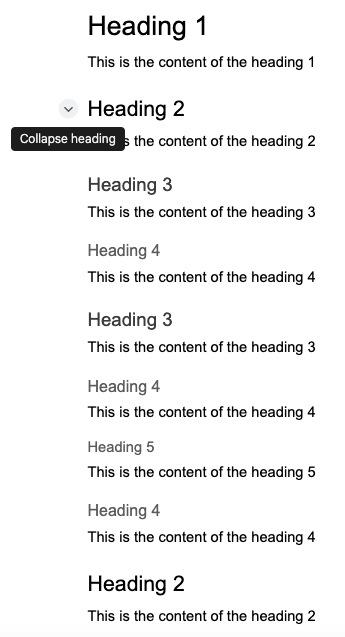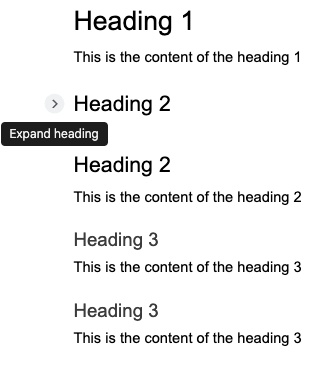Google Docs can be a great place to start building your document, and it can be easily converted to other formats as needed. While Google Docs doesn't support more advanced accessibility features, its flexibility and sharability make it an important platform to learn.
The Google Help Center provides resources for creating accessible documents, presentations, and sheets.
Simple documents can be checked for accessibility and published in Google Docs without being converted to any other formats (e.g. Microsoft Word or PDF).
Checking Simple Documents for Accessibility in Google Docs
To check simple documents for accessibility directly in Google Docs, go to:
Extensions > Accessibility Checker for Docs -> Check Doc
If you don't have this extension installed, go to Extensions > Add-Ons > Get Add-Ons and search for "Accessibility Checker for Docs". Choose the option "by Lovely API" and click the install button.
Accessibility Checker for Docs does not check everything, so remember to check heading hierarchy manually.
Don't Forget the Required Footer!
If you have completed the following, you can officially add a footer to the first page of your document per Procedure 720.1A, denoting that it has been checked for accessibility.
- Confirmed that your document is simple (not complex)
- Ran the "Accessibility Checker for Docs" extension and fixed any errors
- Manually checked heading hierarchy
Complex documents will need to be converted to either Microsoft Word documents (.docx) or PDF documents (.pdf). In general, it is best to convert to a Microsoft Word document first, even if your publishing format is a PDF.
Converting a Google Doc to a Microsoft Word Document
To convert a Google Doc to a Word document, follow these simple steps:
- Open the document in Google Docs.
- Open to the file menu by clicking "File" in the top left of the screen under the document title.
- In the file menu, find the "Download" menu item and hover your mouse over it to open the submenu.
- Choose the option "Microsoft Word Document (.docx)".
- Depending on your computer and browser settings, this may download automatically to your Downloads or another custom folder, or it may prompt you to choose a place to download the file. You can now open this file in Microsoft Word on your computer.
Conversion Considerations
- Tables do not have header rows in Google Docs. When converting from a Google Doc to a Microsoft Word document, you will need to set (at a minimum) the first row of each table as a table header in Microsoft Word.
- Charts/graphs created in Google Docs will be converted to images when downloaded as a Word Document (.docx). To make these accessible, you can remake the chart/graph in Word, or you can give the generated image descriptive alternative text. If using charts/graphs created in Google Docs, ensure the chart/graphs are accessible for colorblind users before converting to a Word document.
Even if you want your document to be a PDF, it is best to download a Google Doc as a Word document first before converting to a PDF.
Ready for the next step? Learn more about making a Microsoft Word document accessible and about converting it to an accessible PDF on the Microsoft Word document as a Source Document help page.
Checking Heading Hierarchy Manually in Google Docs
In Google Docs, you can see the hierarchy in the sidebar visually to get a quick and simple overview of your document's structure. You can also collapse the content of one or multiple headings which is very helpful in seeing where paragraphs and subheadings are nested. See the images below for examples.
It is important to remember that the "Title" paragraph style does not function as a heading. "Heading 1" should be used in place of the "Title" paragraph style, otherwise your documents heading hierarchy will be thrown off.
Google Docs sidebar: Summary and Outline

Google Docs heading example (no headings collapsed)

Google Docs heading example (Heading 2 collapsed)

Accessibility is constantly evolving to keep up with emerging technologies, and the
information herein is not comprehensive. If you still have questions, please fill
out our form. We recommend completing the Canvas training "Accessibility Training: How to Create Content that Works for Everyone" first!Still Have Questions?
Contact Accessibility Coordinators
Disability and Access Services
Contact DAS for accommodations and help with access barriers.
(360) 442-2340
mmorgan@lowercolumbia.edu
Information Technology Services
Contact IT for help with procurement and third-party technologies.
(360) 442-2250
(360) 442-2259
eLearning
Contact eLearning for help with course content and digital documents.
(360) 442-2520
elearning@lowercolumbia.edu
Effectiveness and College Relations
Contact ECR for help with webpages, complex web documents, and social media.